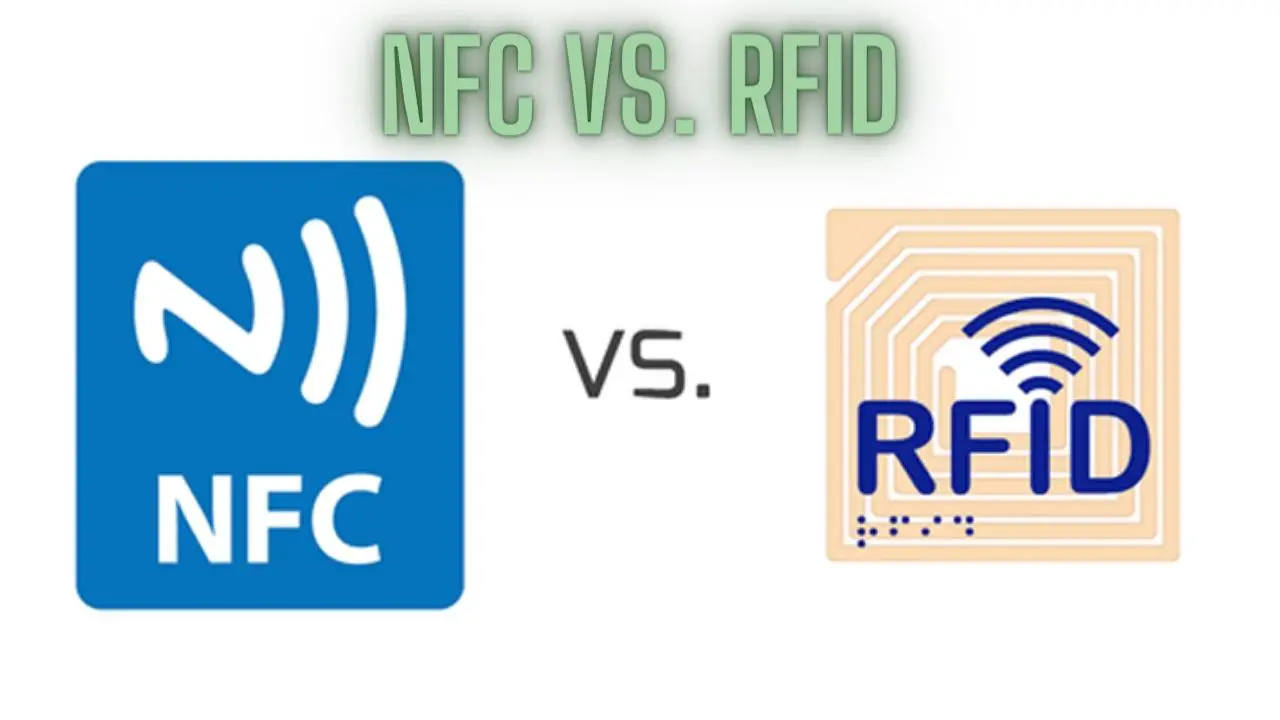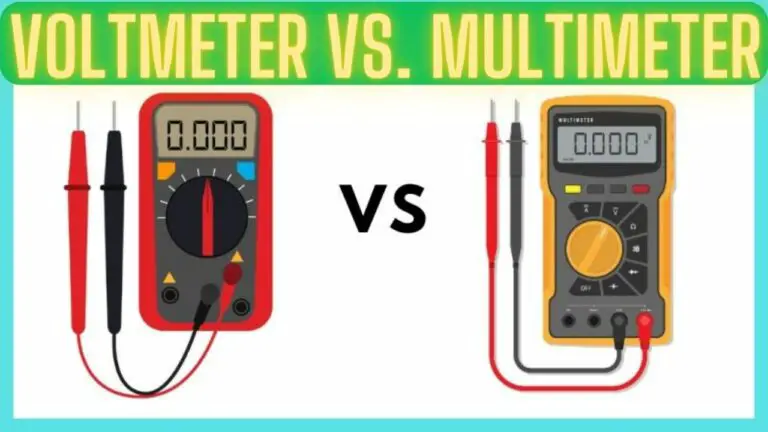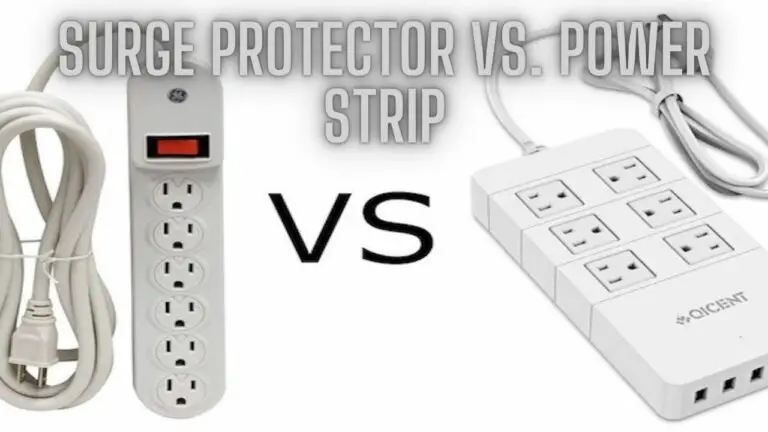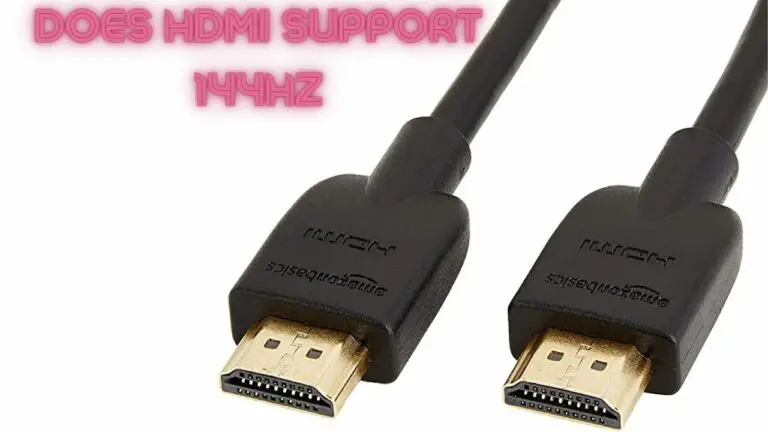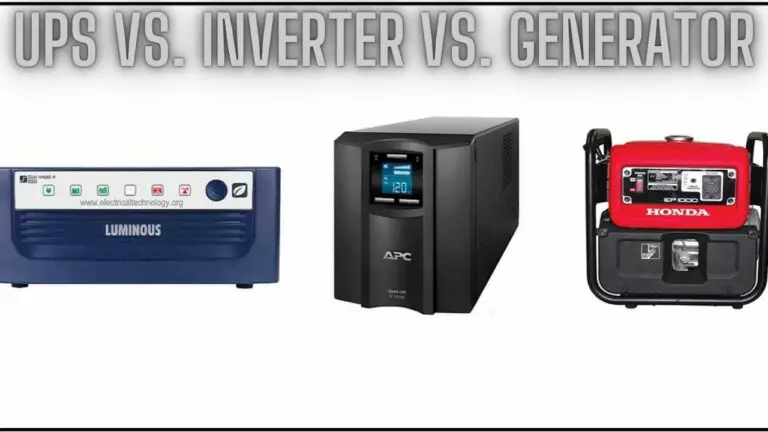NFC vs. RFID: Unpacking the Differences
Introduction
In the world of wireless communication technologies, NFC (Near Field Communication) and RFID (Radio-Frequency Identification) are two popular players. While both NFC and RFID facilitate contactless data transfer, they serve distinct purposes and operate under different principles. In this article, we’ll explore the differences between NFC and RFID, their applications, and the unique strengths they bring to the table.
What is NFC?
Near Field Communication, or NFC, is a short-range wireless communication technology that allows devices to establish a connection when they are close, typically within a few centimeters. NFC operates on the 13.56 MHz frequency and is widely used for various applications, including mobile payments, contactless card access, and data transfer between devices.
Key Characteristics of NFC:
- Short Range: NFC has a limited range, typically around 4 centimeters (1.5 inches). This short range makes it suitable for secure, close-proximity interactions.
- Two-Way Communication: NFC devices can both send and receive data, making them versatile for various applications like sharing photos, pairing Bluetooth devices, and making mobile payments.
- Security: NFC is known for its security features, including encryption and authentication, making it suitable for secure transactions and data exchanges.
- Common Uses: NFC is commonly used in mobile payment systems like Apple Pay and Google Pay, contactless access cards, public transportation cards, and smart posters for marketing and information dissemination.
Applications of NFC
Near Field Communication (NFC) is a versatile technology that enables short-range wireless communication between devices and tags. Its applications span various industries, from mobile payments to access control and beyond. Here are some key applications of NFC:
1. Mobile Payments:
- NFC-enabled smartphones can be used to make contactless payments at retail stores, restaurants, and public transportation systems. Popular mobile payment services like Apple Pay, Google Pay, and Samsung Pay rely on NFC technology.
2. Access Control:
- NFC-based access control systems are used in offices, hotels, and residential buildings. Employees or residents can use NFC cards or smartphone apps to gain entry to secure areas.
3. Public Transportation:
- Many public transportation systems worldwide have adopted NFC-based contactless ticketing. Commuters can use NFC-enabled cards or smartphones to pay for rides and access transit services.
4. Contactless ID Cards:
- NFC technology is used in contactless identification cards, such as employee badges and student IDs. These cards can be used for secure access and authentication.
5. Mobile Boarding Passes:
- Airlines provide mobile boarding passes to passengers, which can be stored on a smartphone and scanned at security checkpoints and gates using NFC technology.
6. Information Sharing:
- NFC allows for quick and easy sharing of information between devices. Users can tap their NFC-enabled smartphones to exchange contact information, photos, or links.
7. Loyalty Programs:
- Retailers and businesses use NFC to implement customer loyalty programs. Shoppers can earn rewards and discounts by tapping their NFC-enabled devices at checkout.
8. Healthcare:
- NFC-enabled wristbands or cards are used in healthcare settings for patient identification, access control, and tracking medical history and medication.
9. Smart Home Control:
- NFC tags can be placed around the home to trigger specific actions. For example, tapping an NFC-enabled smartphone on a tag by the front door could activate or deactivate security systems, adjust lighting, or control music playback.
10. Marketing and Advertising:
NFC tags can be embedded in promotional materials, posters, or product packaging. When consumers tap their NFC-enabled devices on these tags, they can access product information, videos, or special offers.
11. Gaming:
NFC technology is used in some gaming consoles and toys. Players can interact with physical figurines or cards that have embedded NFC chips to unlock in-game content or characters.
12. Event Ticketing:
NFC-enabled tickets are used for entry to concerts, sports events, and festivals. These tickets can be stored on a smartphone or physical card and scanned at the event venue.
13. Inventory and Asset Management:
In industries like logistics and manufacturing, NFC tags are used to track and manage inventory and assets efficiently.
14. Authentication and Security:
NFC is utilized for secure authentication processes, such as unlocking smartphones, authorizing transactions, or accessing sensitive data.
15. Environmental Monitoring:
NFC technology can be incorporated into sensors for environmental monitoring, enabling data collection and transmission for various applications like weather monitoring and agriculture.
The versatility and convenience of NFC technology continue to drive its adoption in a wide range of industries and applications, making it a valuable tool for simplifying and enhancing various aspects of our daily lives.
What is RFID?
Radio-Frequency Identification, or RFID, is a technology that uses radio waves to identify and track objects or individuals remotely. RFID operates at various frequency ranges, including low frequency (LF), high frequency (HF), and ultra-high frequency (UHF), depending on the application and required range.
Key Characteristics of RFID:
- Variable Range: RFID technology offers a range of frequencies, with LF for short-range applications (a few centimeters to meters) and UHF for long-range applications (up to tens of meters).
- One-Way Communication: In most RFID applications, data is read from RFID tags or chips by an RFID reader or scanner. The tags themselves do not actively send data like NFC devices.
- Diverse Applications: RFID has a wide range of applications, including inventory management, access control, logistics, asset tracking, and animal identification.
- Less Secure: RFID technology is generally considered less secure compared to NFC because it lacks encryption and authentication features. This makes it more vulnerable to data interception.
Applications of RFID
Radio-Frequency Identification (RFID) is a powerful technology that uses electromagnetic fields to automatically identify and track objects or individuals. RFID applications are diverse and span across various industries, improving efficiency, security, and data management. Here are some key applications of RFID:
1. Inventory Management:
- Retailers use RFID to track inventory in real-time, reducing stockouts and overstock situations. RFID tags on products enable automated inventory tracking and monitoring.
2. Supply Chain and Logistics:
- RFID helps optimize supply chain operations by tracking shipments, pallets, and individual items throughout the entire logistics process. It enhances visibility and reduces errors in shipping and receiving.
3. Asset Tracking:
- Many organizations use RFID to manage and track valuable assets like equipment, machinery, vehicles, and IT assets. RFID tags enable easy asset identification and maintenance tracking.
4. Access Control:
- RFID cards or badges are widely used for secure access control in buildings, offices, parking lots, and restricted areas. Employees can gain entry by tapping their RFID-enabled cards or badges on readers.
5. Passport and ID Cards:
- Some countries have incorporated RFID chips into passports and national ID cards for improved security and faster border control processes.
6. Smart Cards:
- RFID-enabled smart cards are used for various purposes, including contactless payments, public transportation access, and loyalty programs.
7. Toll Collection:
- RFID tags on vehicles, known as electronic toll collection (ETC) systems, allow for seamless toll payment and vehicle tracking on highways and bridges.
8. Healthcare:
- Hospitals use RFID to manage patient records, monitor the location and status of medical equipment, and enhance patient identification and safety.
9. Livestock and Animal Tracking:
- RFID ear tags or implants are used to track and manage livestock and pets. This technology helps in animal identification, health monitoring, and tracking movement.
10. Library and Document Management:
Libraries and document repositories use RFID tags on books, documents, and assets to streamline check-in, check-out, and tracking processes.
11. Manufacturing and Production:
RFID is utilized for tracking work-in-progress items, monitoring equipment, and ensuring quality control in manufacturing and production processes.
12. Waste Management:
RFID tags are placed on waste bins for efficient waste collection and management. These tags help optimize routes, monitor container status, and track waste disposal.
13. Anti-counterfeiting:
RFID can be used in anti-counterfeiting measures for high-value products, allowing consumers to verify the authenticity of products by scanning RFID tags.
14. Pharmaceuticals:
In the pharmaceutical industry, RFID is used for tracking drug shipments, monitoring inventory, and ensuring the integrity of the supply chain.
15. Hospitality:
Hotels and resorts use RFID wristbands or key cards for guest access to rooms, facilities, and services, enhancing the guest experience.
16. Aerospace and Aviation:
Airlines use RFID for tracking luggage and cargo, reducing the risk of lost or mishandled baggage.
17. Retail Apparel:
Retailers attach RFID tags to clothing items to improve inventory accuracy and enhance the shopping experience, enabling customers to quickly locate items.
18. Waste Recycling:
RFID technology is applied to waste recycling containers, helping to manage and optimize the collection and recycling processes.
19. Sports Timing:
RFID is used in sports events for accurate timing and tracking of athletes, such as in marathons and triathlons.
These applications showcase the versatility and impact of RFID technology across multiple sectors. As RFID technology continues to evolve, it is likely to find new and innovative uses, further enhancing efficiency, security, and convenience in various industries.
Key Differences between NFC (Near Field Communication) and RFID (Radio Frequency Identification)
NFC and RFID are both wireless communication technologies that utilize radio frequency (RF) for data transmission, but they have distinct characteristics and applications. Here are the key differences between NFC and RFID:
- Communication Range:
- NFC: NFC operates over short distances, typically within a range of a few centimeters to a maximum of about 10 centimeters. This short range is intentional, designed to enhance security and prevent unintentional data transmission.
- RFID: RFID systems can operate over a wider range of distances, depending on the specific type of RFID technology used. While some RFID systems operate within a short range similar to NFC, others can communicate over longer distances, ranging from a few meters to several meters.
- Operating Frequency:
- NFC: NFC operates at frequencies of 13.56 MHz. This frequency is standardized globally for NFC communication and is regulated by international standards organizations such as the NFC Forum.
- RFID: RFID systems can operate at various frequencies, including low-frequency (LF), high-frequency (HF), and ultra-high-frequency (UHF). LF RFID typically operates at frequencies around 125 kHz, while HF RFID operates at 13.56 MHz. UHF RFID operates at frequencies between 860 MHz and 960 MHz.
- Data Transfer Rate:
- NFC: NFC supports relatively slower data transfer rates compared to RFID. The maximum data transfer rate for NFC is typically around 424 kbps (kilobits per second), which is suitable for applications such as contactless payments, data exchange between smartphones, and access control.
- RFID: RFID systems can support higher data transfer rates, especially those operating at UHF frequencies. UHF RFID systems can achieve data transfer rates ranging from several hundred kilobits per second to several megabits per second, depending on the specific technology and application.
- Operating Mode:
- NFC: NFC devices can operate in three different modes: reader/writer mode, peer-to-peer mode, and card emulation mode. These modes enable various applications, including contactless payments, data exchange between devices, and access control.
- RFID: RFID systems typically operate in one of two modes: reader mode or tag mode. In reader mode, the RFID reader communicates with RFID tags or transponders to read or write data. In tag mode, passive RFID tags respond to queries from RFID readers and transmit their unique identifier or other data stored in the tag’s memory.
- Security Features:
- NFC: NFC incorporates built-in security features, including data encryption and mutual authentication, to protect sensitive information during communication. These security features are essential for applications such as mobile payments and access control.
- RFID: RFID systems may have security features, but they are generally less robust compared to NFC. Basic RFID systems may lack encryption and authentication mechanisms, making them vulnerable to unauthorized access and data interception.
- Applications:
- NFC: NFC technology is commonly used for contactless payments, mobile ticketing, smart access control, data exchange between smartphones, and IoT (Internet of Things) applications such as smart home devices.
- RFID: RFID technology has a wide range of applications across various industries, including inventory management, supply chain logistics, asset tracking, access control, vehicle identification, and livestock tracking.
In summary, while NFC and RFID share similarities as wireless communication technologies, they differ in terms of communication range, operating frequency, data transfer rate, operating mode, security features, and applications. Understanding these differences is essential for selecting the appropriate technology for specific use cases and applications.
FAQS
What is the main difference between NFC and RFID?
The main difference between NFC (Near Field Communication) and RFID (Radio-Frequency Identification) is the communication range. NFC operates over a very short range, typically within a few centimeters, while RFID can operate over a wide range, from inches to several meters, depending on the frequency used.
How do NFC and RFID work differently?
NFC and RFID both use radio waves for communication, but NFC is designed for two-way communication, allowing devices to both send and receive data. RFID, on the other hand, is typically one-way communication, where an RFID reader reads data from passive RFID tags.
What are the typical applications for NFC and RFID?
NFC is commonly used for applications like mobile payments, access control, and data sharing between devices. RFID is used in various industries for tracking and identifying objects or individuals, including inventory management, logistics, access control, and asset tracking.
Are NFC and RFID tags the same?
NFC tags and RFID tags are similar in that they both use radio waves for communication. However, NFC tags are a subset of RFID tags and are designed for close-range communication (a few centimeters), often used for secure and interactive applications.
Is one technology more secure than the other?
NFC generally offers more robust security features compared to RFID. NFC devices often include encryption and authentication, making them suitable for secure transactions and data exchanges. RFID is considered less secure and is typically used for tracking and identification rather than secure data transfer.
Can NFC devices read RFID tags, and vice versa?
In most cases, NFC devices are not compatible with reading standard passive RFID tags due to differences in frequency and protocols. However, some modern smartphones may have the capability to read certain types of RFID tags, but this capability is not common.
Which technology is better for tracking assets in a warehouse?
RFID is better suited for tracking assets in a warehouse or large storage facility due to its longer range and ability to read multiple tags simultaneously. It offers real-time visibility and efficiency in asset management.
Can I use NFC or RFID for contactless payments?
Yes, both NFC and RFID technologies are used for contactless payments. NFC is commonly used in mobile payment systems like Apple Pay and Google Pay, while RFID is used in contactless payment cards such as credit or debit cards with the contactless symbol.
Are there privacy concerns with NFC and RFID?
Privacy concerns can arise with both NFC and RFID, particularly if the technology is used for tracking or identification without proper consent or security measures. However, NFC often includes security features like encryption and authentication to address privacy concerns.
Are NFC and RFID used in the same industries or applications?
While there is some overlap in their applications, NFC and RFID are often used in different industries and for different purposes. NFC is commonly used in consumer-facing applications like mobile payments and access control, while RFID is used in logistics, manufacturing, and asset management, among others.
Conclusion:
In summary, NFC and RFID are both valuable technologies that enable contactless communication and data transfer. They serve different purposes and have distinct characteristics, with NFC excelling in secure, short-range interactions, and RFID being versatile for long-range tracking and identification applications. Understanding their differences is crucial when selecting the right technology for a specific use case.

